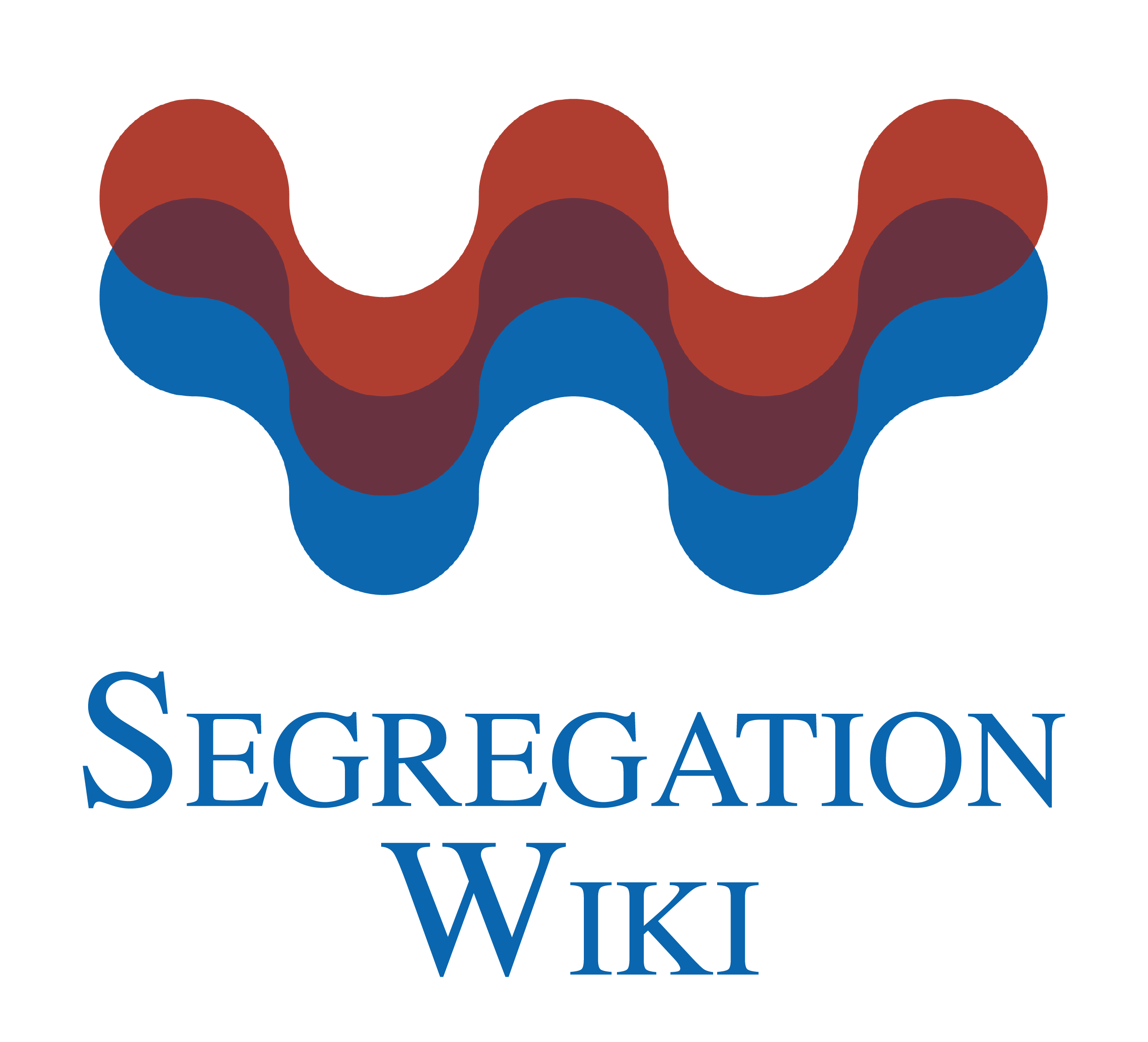Regional segregation
Date and country of first publication[1]
1994
None
Definition
At its current state, this definition has been generated by a Large Language Model (LLM) so far without review by an independent researcher or a member of the curating team of segregation experts that keep the Segregation Wiki online. While we strive for accuracy, we cannot guarantee its reliability, completeness and timeliness. Please use this content with caution and verify information as needed. Also, feel free to improve on the definition as you see fit, including the use of references and other informational resources. We value your input in enhancing the quality and accuracy of the definitions of segregation forms collectively offered in the Segregation Wiki ©.
Regional segregation refers to the division of people based on their race, ethnicity, or socioeconomic status within a particular geographic area. This can result in distinct neighborhoods or communities that are predominantly inhabited by a specific racial or ethnic group or people of a certain socioeconomic status.
Regional segregation can occur as a result of historical factors such as discriminatory practices, redlining, or racially motivated housing policies. It can also be perpetuated by socioeconomic disparities, as people with similar backgrounds and resources tend to cluster together.
The consequences of regional segregation can be significant. It can lead to unequal access to resources and opportunities, such as quality education, healthcare, employment, and public services. It can also contribute to social isolation, limited cultural diversity, and the perpetuation of stereotypes and prejudices.
Efforts to address regional segregation often involve policies and initiatives aimed at promoting fair housing practices, improving access to affordable housing, and promoting inclusive communities. These efforts aim to create more equitable and integrated neighborhoods where people from different backgrounds can coexist and have equal opportunities for success and well-being.
See also
References
Notes
- ↑ Date and country of first publication as informed by the Scopus database (December 2023).
Further reading
Sakuno H. (1994) "Regional differences in the depopulation process in mountain settlements of hiroshima prefecture", Japanese Journal of Human Geography, 46(1), pp. 22-42. . DOI: [htttp://doi.org/10.4200/jjhg1948.46.22 10.4200/jjhg1948.46.22]
Lee D.O.; Brunn S.D. (1996) "Politics and regions in Korea: An analysis of the recent presidential election", Political Geography, 15(1), pp. 99-119. Elsevier BV. DOI: [htttp://doi.org/10.1016/0962-6298(95)00002-X 10.1016/0962-6298(95)00002-X]
Logan J.R.; Zhang C. (2010) "Global neighborhoods: New pathways to diversity and separation", American Journal of Sociology, 115(4), pp. 1069-1109. . DOI: [htttp://doi.org/10.1086/649498 10.1086/649498]
Alasah A.A. (2011) "The impact of government policy on grassroots level community development initiative in the Northwest region of Cameroon", Community Development Journal, 46(2), pp. 196-212. . DOI: [htttp://doi.org/10.1093/cdj/bsp061 10.1093/cdj/bsp061]
Kyriacou A.P. (2012) "Ethnic segregation and the quality of government: The importance of regional diversity", Constitutional Political Economy, 23(2), pp. 166-180. . DOI: [htttp://doi.org/10.1007/s10602-012-9118-3 10.1007/s10602-012-9118-3]
Dueñas Fernández D.; Iglesias Fernández C.; Llorente Heras R. (2013) "Labour segregation in the Spanish regions from 1996 to 2010; [La segregación laboral en las regiones Españolas durante el periodo 1996 2010]", Investigaciones Regionales, 91-113. . DOI: [htttp://doi.org/ ]
Costafreda S.G.; McCann P.; Saker P.; Cole J.H.; Cohen-Woods S.; Farmer A.E.; Aitchison K.J.; McGuffin P.; Fu C.H.Y. (2013) "Modulation of amygdala response and connectivity in depression by serotonin transporter polymorphism and diagnosis", Journal of Affective Disorders, 150(1), pp. 96-103. . DOI: [htttp://doi.org/10.1016/j.jad.2013.02.028 10.1016/j.jad.2013.02.028]
Itoh R. (2013) "Regional income disparities in an OLG structure", Annals of Regional Science, 50(1), pp. 185-202. Springer Verlag. DOI: [htttp://doi.org/10.1007/s00168-011-0489-6 10.1007/s00168-011-0489-6]
Nakagawa M. (2015) "Which Has Stronger Impacts on Regional Segregation: Industrial Agglomeration or Ethnolinguistic Clustering?", Spatial Economic Analysis, 10(4), pp. 428-450. Routledge. DOI: [htttp://doi.org/10.1080/17421772.2015.1076576 10.1080/17421772.2015.1076576]
Jones B.D.; Harris K.M.; Tate W.F. (2015) "Ferguson and beyond: A descriptive epidemiological study using geospatial analysis", Journal of Negro Education, 84(3), pp. 231-253. Howard University. DOI: [htttp://doi.org/10.7709/jnegroeducation.84.3.0231 10.7709/jnegroeducation.84.3.0231]
Robinson A.L. (2016) "Internal Borders: Ethnic Based Market Segmentation in Malawi", World Development, 87(), pp. 371-384. Elsevier Ltd. DOI: [htttp://doi.org/10.1016/j.worlddev.2016.07.006 10.1016/j.worlddev.2016.07.006]
Siptár D.; Tésits R.; Alpek B.L. (2016) "Cultural and regional characterictics of poverty segregations: Based on the examples of hungarian peripheral regions", Eastern European Countryside, 22(1), pp. 107-134. De Gruyter Open Ltd. DOI: [htttp://doi.org/10.1515/eec-2016-0006 10.1515/eec-2016-0006]
Qi Y.; Liang T. (2016) "Regional segregation or industrial monopoly? Dual labor market segmentation and income inequality in China", Journal of Chinese Sociology, 3(1), pp. -. Springer. DOI: [htttp://doi.org/10.1186/s40711-016-0048-8 10.1186/s40711-016-0048-8]
Tate W.F.; Jones B.D. (2017) "2015 Wallace Foundation Distinguished Lecture: Anonymity No More: Seeing Our Neighbors in Ferguson and the Implications for Social Policy", Educational Researcher, 46(5), pp. 223-233. SAGE Publications Inc.. DOI: [htttp://doi.org/10.3102/0013189X17721701 10.3102/0013189X17721701]
Luo G.; Dan E.; Zhang X.; Guo Y. (2018) "Why the wind curtailment of northwest China remains high", Sustainability (Switzerland), 10(2), pp. -. MDPI. DOI: [htttp://doi.org/10.3390/su10020570 10.3390/su10020570]
Çelem A.S.; Akçagün P. (2020) "Labour in Turkey: Economic, Political and Social Perspectives", Labour in Turkey: Economic, Political and Social Perspectives, 1-278. Peter Lang AG. DOI: [htttp://doi.org/10.3726/b17451 10.3726/b17451]
Subedi B.P. (2021) "Rural urban migration and ethnic diversification in Kathmandu Metropolitan City, Nepal", Asian and Pacific Migration Journal, 30(2), pp. 225-253. SAGE Publications Inc.. DOI: [htttp://doi.org/10.1177/01171968211017966 10.1177/01171968211017966]
Ruiz López C.; Morales Barragán F.; Méndez-Lemus Y.; Vierya A. (2023) "ANALYZING THE LATIN AMERICAN CITY MODEL’S OMISSIONS IN STUDIES OF SEGREGATION IN INTERMEDIARY CITIES’ PERIPHERAL TERRITORIES: THE CASE OF MORELIA, MEXICO", Geographical Review, -. Routledge. DOI: [htttp://doi.org/10.1080/00167428.2023.2174867 10.1080/00167428.2023.2174867]
